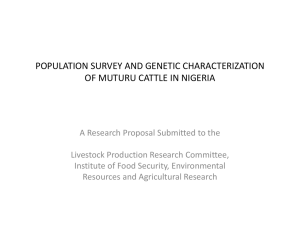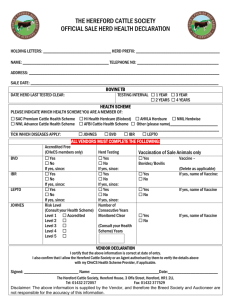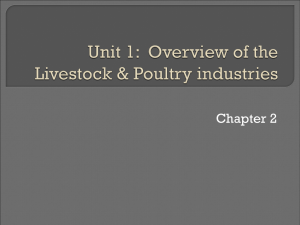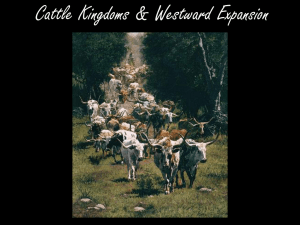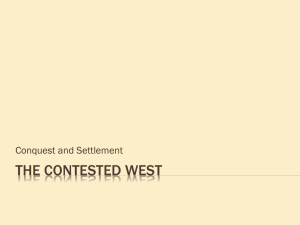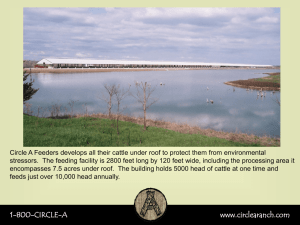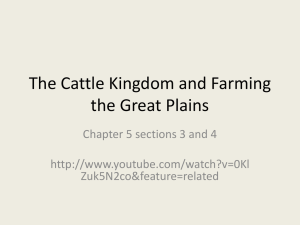Surveillance Changes During the Latter Stages of Eradication
advertisement
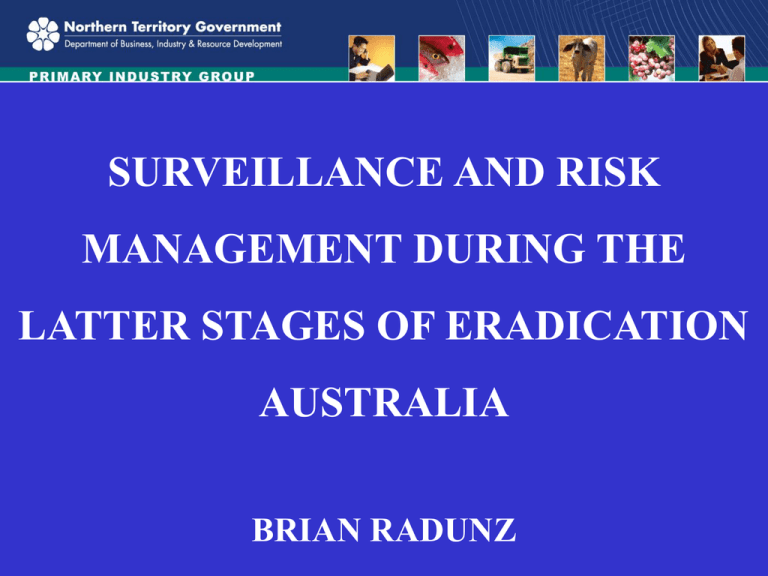
SURVEILLANCE AND RISK MANAGEMENT DURING THE LATTER STAGES OF ERADICATION AUSTRALIA BRIAN RADUNZ Darwin Great Barrier Reef NT Qld WA Ayers Rock SA NSW Perth Sydney Vic Tas Eastern and Southern Australia • farming areas • 150,000 properties • small herd size (<100 average) • some herds up to 2000 - 3000 head • TB free by mid 1980s TB eradication by standard test and slaughter techniques •Europe •North America •New Zealand Central and Northern Australia Extensive grazing • < 2000 properties • large herd size (5000-50,000) • large property size (3-10 head per sq km) • 2000 - 15000 sq kms TB ERADICATION •Paddocks • Bush area (uncontrolled parts of property) • test and slaughter • weaner segregation • paddock checks • destocking (age and bush) • completion of destocking New Steel Yard AGE DESTOCKING higher prevalence aged cows and bulls in controlled areas (early in campaign) BUSH DESTOCKING all cattle from bush areas (uncontrolled areas) BREAKDOWN DESTOCKING exposed cattle (later in campaign) in response to a breakdown Bush Destocking •muster (3-5 years) •chopper shooting (1-2 years) •radio tracking (5-7 years) Radio tracking to complete destocking JUDAS ANIMALS FERAL PIGS • very common on the flood plains near Darwin • TB (M. bovis) in feral pigs is closely associated with TB infected cattle and buffalo • No TB found in pigs since infected cattle and buffalo removed • Strong evidence that in the Northern Territory the feral pig is an end-host McInerney et al 1995, Australian Veterinary Journal, 72: 448-451 Risk Management and field surveillance during latter stages of the campaign • Increasing TB testing prior to quarantine release • Additional surveillance testing after quarantine release • Destocking exposed cattle as the primary eradication tool HERD TB STATUS PROGRESSION Infected whole herd negative test (>60 days) Restricted whole herd negative test at least 6 months later Provisionally Clear (QR1) whole herd negative test at least 6 months later Confirmed Free 1(QR2) whole herd negative test at least 12 months later Confirmed Free 2 (QR3) negative test of exposed animals within 8 years Confirmed Free 3 In 1999 the Confirmed Free 3 surveillance was replaced with additional risk management and accelerated commercial slaughter • incentives and disincentives applied • financial assistance to accelerate slaughter of exposed cows • reduced financial assistance in the event of a TB case if no compliance Herds infected with TB from 1 January 1988 to 31 December 1999 and NOT totally destocked Older than 12 months at exposure Less than 12 months at exposure Category A cattle Category B cattle Annual TB test of cattle and any in-contact cattle until slaughter TB test of cattle and any in-contact cattle every 2 years until slaughter Primary cases of tuberculosis from 1993 - 2002 1993 8 BTEC 1994 7 1995 8 1996 6 1997 7 1998 4 1999 1 2000 1 2001 0 2002 2 TFAP Last TB in cattle Two adjacent water buffalo herds NT 1999 Qld 2000 WA 1998 SA 1996 NSW 1995 Vic 1991 Last TB Case in Cattle Tas 1975 Abattoir Surveillance National Granuloma Submission Program (NGSP) • To increase the sensitivity of the abattoir monitoring system • Started late 1992 • ALL granulomas submitted to laboratory • 8-9 M cattle slaughtered annually 1993 - 97 1998-2002 Kills Ms 36.3 41.1 Granulomas 12992 21148 TB detected 57 10* * 2 Clusters each with 3 primary cases in each cluster NGSP2 • Targeted NGSP • Started October 2002 • Phased in introduction - based on date of last TB case • Very low risk States • • meat inspector to submit granuloma only if unsure of the cause Low risk States • granulomas from head and thorax only • From January 2007 in all States inspectors will submit only granulomas if unsure of the cause • From 2007 TB exclusion will be part of general surveillance Origin of granulomas % Thorax 23 Head 72 Abdomen 3 Other 2 Diagnosis of granulomas during TFAP (1998 - 2002) % Actinobacillosis 49 Rhodococcus 12 Neoplasm 7 Parasitic 4 Fungal 2 Nocardia 1 Other 20 No Diagnosis 5 Tuberculosis 0.04 REASONS FOR SUCCESS IN ERADICATION • strong government and industry support • joint industry and government funding and decision making • industry funded 50% • strong technical basis • no wildlife reservoir hosts • consistent implementation • risk manage exposed cattle in latter stages of the campaign • granuloma submission program in latter stages of the program
